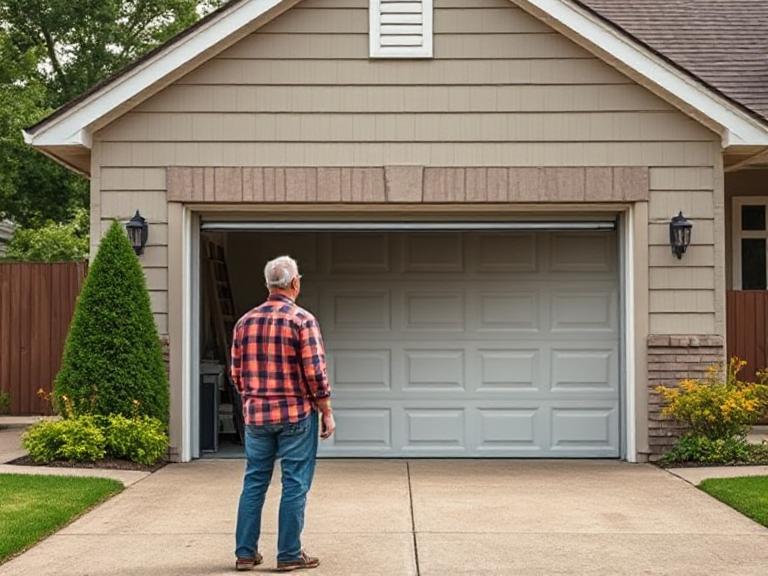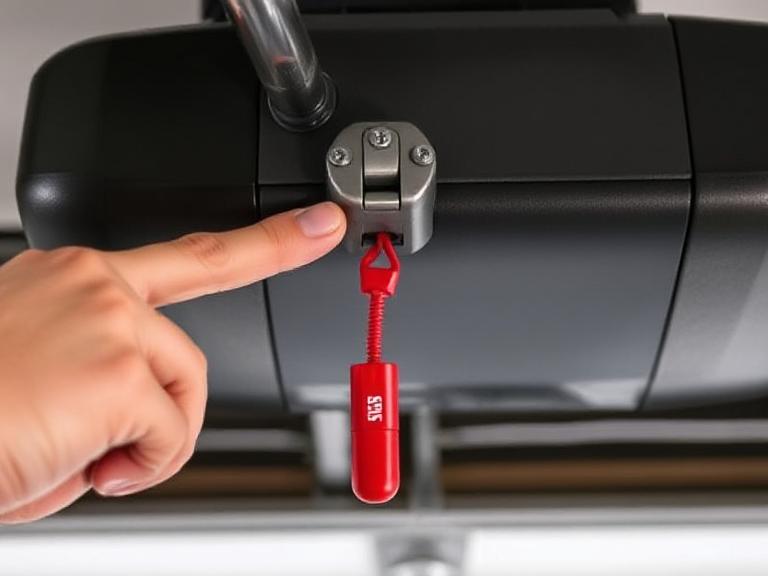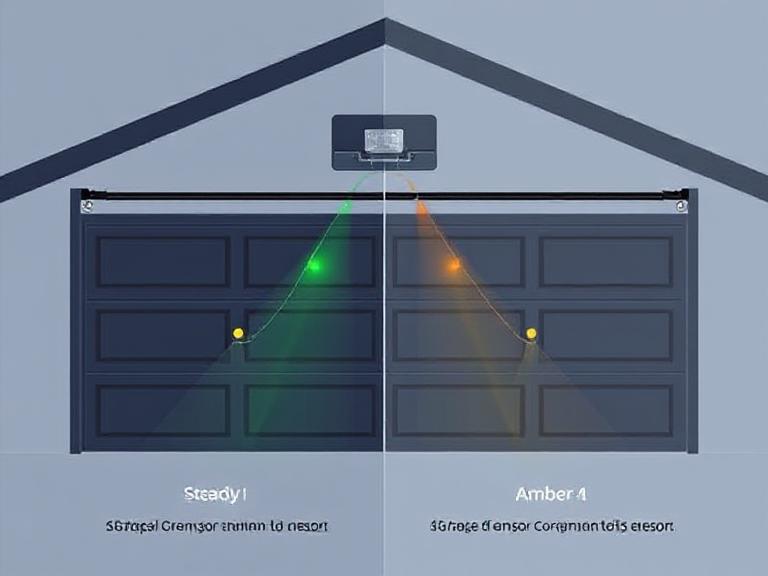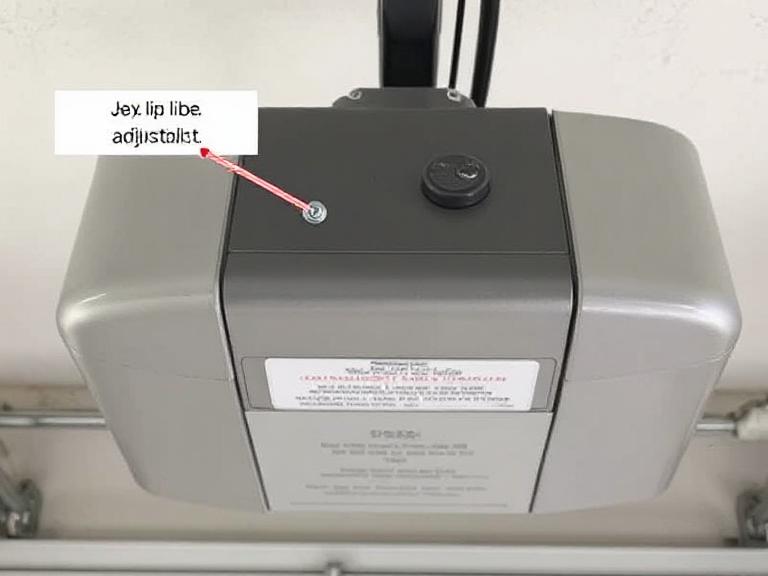If your garage door opener is not closing, you know the feeling of panic. It’s raining, you’re late for work, and your garage door just won’t listen. Before you assume the worst and call an expensive repair service, take a deep breath. In most cases, this is a simple problem you can fix yourself. This guide will walk you through the top reasons and the safest, easiest solutions for a garage door opener not closing fix in 2025. We’ll start with the most common culprits and work our way to more complex issues. Let’s get that door down.
Table of Contents
ToggleSafety First: What to Check Before You Start
Your garage door is the heaviest moving object in your home. Safety is the number one priority.
-
Never force the door: if it reverses or stops, don’t try to hold the button down. This can damage the opener or the door itself.
-
Know the manual release:Locate the red emergency release cord hanging from the opener trolley. Pulling this will disconnect the opener, allowing you to open and close the door manually.
-
Keep clear: Ensure no people, pets, or objects are near the door’s path before testing any fix.
Reason 1: Dirty or Misaligned Safety Sensors
This is the most common reason a door won’t close, accounting for about 80% of cases. Federal law requires all garage door openers to have these sensors to prevent injury.
The sensors are small plastic units on each side of the door, near the floor. They shoot an invisible beam across the doorway. If anything blocks this beam, the door will not close.
How to Fix Sensor Issues in 5 Minutes
-
Check for Obstructions:Look directly between the two sensors. Is there a leaf, a cobweb, a tool, or a toy blocking the beam? Clear anything in the path.
-
Check the Lights: Each sensor has a small LED light. One will have a steady green light (the sending unit). The other will have a steady amber or red light (the receiving unit). If the light on the receiving sensor is off or blinking, it means the beam is broken.
-
Realign the Sensors: Gently adjust the bracket of the sensor with the blinking light until its LED glows steadily. You may hear a click from the opener when the connection is restored.
-
Clean the Lenses: Wipe the small plastic lenses on both sensors with a soft, clean cloth to remove dust and dirt.
-
Test the Door: Once the lights are steady, try closing the door again.
Reason 2: The Door Path is Blocked
The opener has a second safety feature: it senses resistance. If something is in the way of the door itself, it will reverse.
Check the tracks and the bottom of the door for any obstacles. A common issue is a small rock or piece of debris stuck in the track. Also, check that the weatherstripping on the bottom of the door hasn’t come loose and gotten caught.
Reason 3: The Force or Limit Settings Are Off
The opener has adjustable settings that tell it how much force to use and how far to travel. If these settings are incorrect, the door may think it’s hitting an obstacle and reverse.
-
Force Setting: This controls how hard the opener pushes down. If it’s set too low, the opener will reverse easily.
-
Limit Setting: This tells the opener where the “closed” position is. If it’s set too low, the door will try to travel past the floor and reverse.
How to Adjust the Limits and Force (Carefully)
-
Find the Knobs: On the back of the opener motor, you’ll find two small adjustment knobs or screws. One is for “Up Limit” (or “Travel”) and one for “Down Limit.” There will be another for “Force.”
-
Make Small Adjustments: For a door that won’t close, turn the “Down Limit” adjustment knob slightly clockwise (usually a quarter-turn). This tells the door to travel a bit further down.
-
Adjust Force if Needed: If adjusting the limit doesn’t work, turn the “Force” adjustment knob slightly clockwise to increase the closing power.
-
Test Frequently: After each small adjustment, test the door. Be careful not to over-adjust, as this can cause the door to slam shut with too much force.
Reason 4: Worn-Out or Dry Moving Parts
If the door itself is hard to move, the opener will struggle and reverse. The problem might not be the opener but the door’s hardware.
-
Lubrication: The rollers, hinges, and springs should be lubricated every six months. Use a silicone-based lubricant or white lithium grease. Do not use WD-40, as it is a degreaser and will dry out the parts over time.
-
Worn Rollers: Old, metal rollers can become noisy and hard to move. Upgrading to nylon rollers can make the door much smoother and quieter.
Reason 5: A Failing Garage Door Opener
If you’ve checked all the above and the door still won’t close, the issue might be internal to the opener itself.
-
Logic Board Issues: The main circuit board can fail. Signs include erratic behavior, lights flickering, or no response from any controls.
-
Motor Failure: If the motor is humming but not moving the door, the gears inside may be stripped. This is a common issue in older openers.
When to Call a Professional
It’s important to know your limits. Call a professional technician if:
-
You suspect a broken spring. Never attempt to fix this yourself.
-
The adjustments to the limits and force don’t solve the problem.
-
The door is crooked or makes loud grinding noises.
-
You are not comfortable working on the system.
2025 Tech Tip: Smart Opener Diagnostics
If you have a Wi-Fi-enabled smart opener (like myQ), use its app to your advantage. Many 2025 models can run simple diagnostics and send you specific error codes, like “Sensor Obstruction Detected” or “Travel Limit Error,” which can point you directly to the problem.
Conclusion
A garage door opener not closing is almost always a simple fix. Start by checking the safety sensors—this is the most likely culprit. Then, check for obstructions and adjust the limit and force settings if needed. Regular lubrication can prevent many of these issues from happening in the first place.
By following these steps, you can likely solve the problem yourself quickly and safely. Remember, if you’re ever in doubt, it’s always best to call a professional.
Did this guide help you fix your garage door? Share these tips with a friend or neighbor to save them time and money!
Frequently Asked Questions (FAQs)
Q1: Why does my garage door open but not close, even though nothing is blocking the sensors?
If the sensors seem fine, the next step for a garage door opener not closing fix is to check the down-limit setting on the opener motor. It may be set incorrectly, causing the door to stop before it reaches the ground.
Q2: My garage door closes partway and then goes back up. What does this mean?
This almost always means the safety sensors are dirty or misaligned, or the closing force is set too low. The door senses an obstacle (real or perceived) and reverses as a safety precaution, which is the core issue in a garage door opener not closing Fix the scenario.
Q3: Is there a way to manually close the garage door if the opener is broken?
Yes. Pull the red emergency release cord down firmly. This disconnects the opener from the door. You can then lift the door open and close it by hand. Remember, it will be heavy, so lift with your legs.
Q4: Can cold weather cause my garage door opener not to close?
Yes. Extreme cold can make the door’s components stiff and harder to move. It can also affect the lubrication. The opener might sense this extra resistance and reverse. Applying a cold-weather lubricant can help.
Q5: After a power outage, my garage door opener is not working. What should I do?
First, ensure the opener is plugged in. Some models have a battery backup that may have drained. Unplug the opener for 30 seconds, then plug it back in to reset it. This often resolves the issue after a power surge.

hello friends
my name is Sumit kumar. I am the owner of this website and I share only garage door and lift master information and only informational posts on my website. And I have written this post myself and have given you only a good guide and information.




1 thought on “Garage Door Opener Not Closing Fix? 2025 with These 5 Easy Steps”